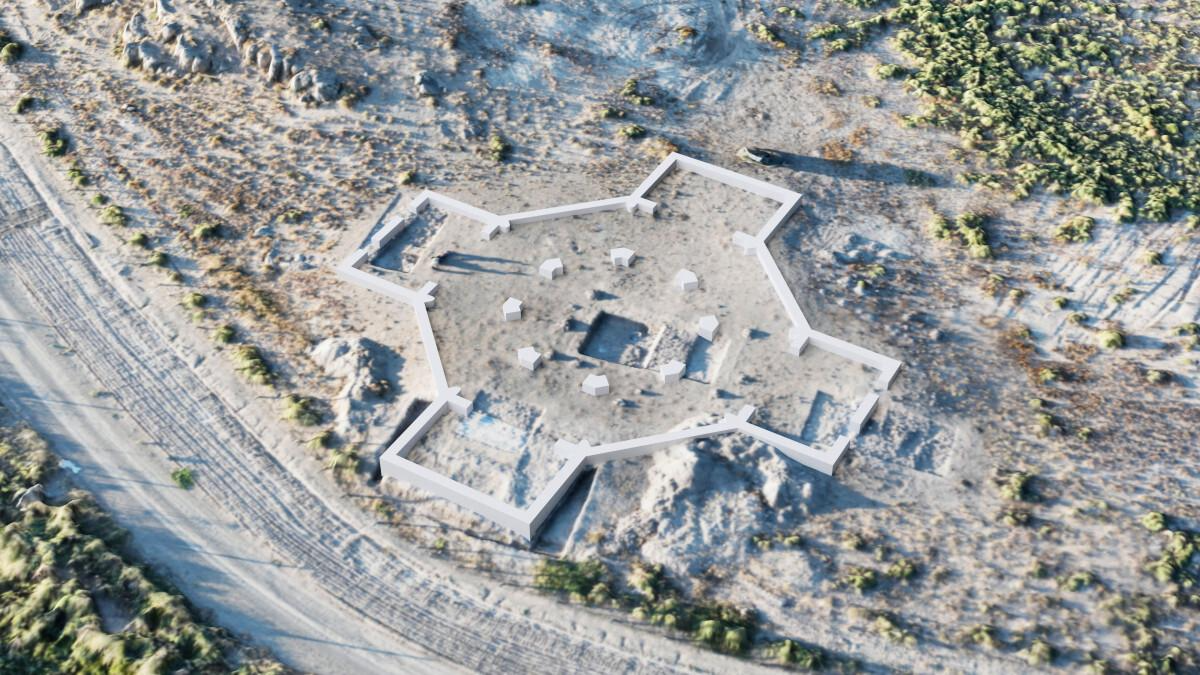Archaeologists have discovered the foundations of Armenia’s oldest known Christian church, near Khor Virap Monastery in Armenia’s Ararat Province, in the ancient city of Artashat (Artaxata) — the former capital of the Kingdom of Armenia — shedding new light on the birth of Christianity in the world’s first Christian nation.
A joint team from the National Academy of Sciences of Armenia (NAS) and Münster University in Germany revealed the remains of a 4th-century octagonal church, marking one of the most significant archaeological discoveries related to early Christianity in Armenia, the NAS reported.
The discovery — first made public in 2024 — has now been officially confirmed and detailed by the NAS, revealing that the structure represents the earliest archaeologically documented Christian church in Armenia.
Situated on the eastern slope of Hill 17 of Old Artashat, the church spans roughly 1,000 square meters and features a distinctive octagonal plan with cruciform extensions, a type previously unknown in Armenia.
This marks the first octagonal church ever discovered in the country. While such architectural designs are well known in the Eastern Mediterranean region, their presence in Armenia demonstrates the deep cultural and artistic connections that accompanied the nation’s conversion to Christianity.
“According to radiocarbon dating results, this structure dates back to the first half of the 4th century and is, in fact, the earliest archaeologically documented church in Armenia,” said Dr. Mkrtich Zardaryan, head of the expedition and Head of the Department of Ancient Armenian Archaeology at the Institute of Archaeology and Ethnography of NAS Armenia.
“The fundamental importance of this discovery is that it greatly enriches our understanding of the mechanisms of Christianity’s spread in Armenia and the architecture of its earliest spiritual structures,” added Dr. Zardaryan.
The church was constructed using local stone bonded with mortar, with walls preserved in varying heights — in some areas reaching up to 2.6 meters. Archaeologists believe the structure had plastered, flat walls, was roofed with terracotta tiles, and featured a lavishly decorated interior. Excavations uncovered numerous marble wall slabs and ornamental fragments imported from Asia Minor, suggesting the church’s interior was richly adorned and maintained artistic ties with the Mediterranean world.
The Armenian-German research team has been studying Artashat’s archaeological layers since 2018, as part of the NAS project “Artashat in the Cultural, Economic, and Social System of Ancient Armenia” and the German Research Foundation’s (DFG) Artaxata Project. The excavation results are currently being prepared for publication.
Historical Background
According to tradition, Gregory the Illuminator converted King Tiridates III to Christianity in Artaxata in 301 AD, making Armenia the first Christian nation in the world. The nearby Khor Virap Monastery still stands as a powerful symbol of that defining moment in history.
This new discovery — found just steps from the soil where Armenia’s Christian identity first took root — provides tangible, scientific evidence of that transformative era and offers a rare glimpse into the earliest expressions of Armenian Christian architecture.


